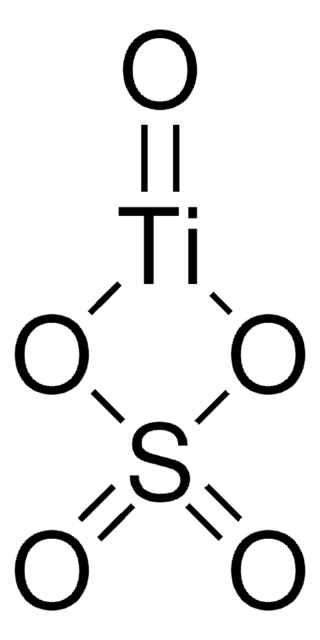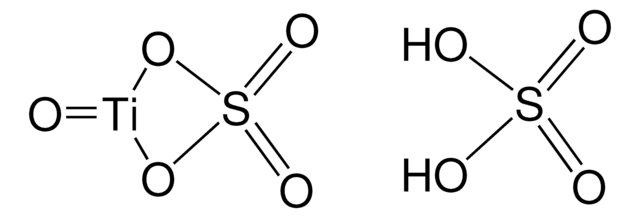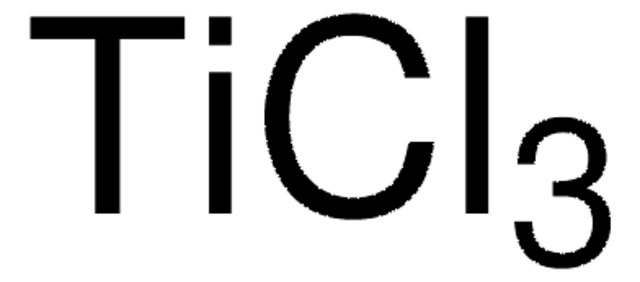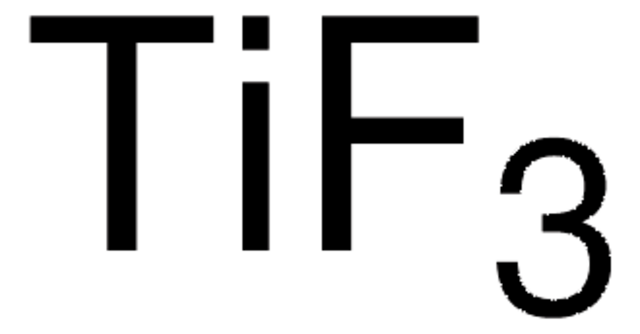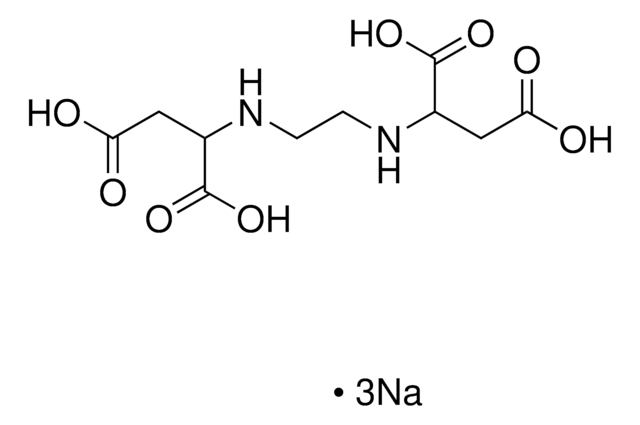Wichtige Dokumente
495379
Titan(IV)-oxysulfat -Lösung
~15 wt. % in dilute sulfuric acid, 99.99% trace metals basis
Synonym(e):
Titanium oxide sulfate, Titanium oxysulfate, Titanyl sulfate (TiO(SO4 ))
About This Item
Empfohlene Produkte
Qualität
for analytical purposes
Qualitätsniveau
Assay
99.99% trace metals basis
Form
liquid
Eignung der Reaktion
reagent type: catalyst
core: titanium
Konzentration
~15 wt. % in dilute sulfuric acid
Verunreinigungen
≤150.0 ppm Trace Metal Analysis
bp
>100 °C
Dichte
1.361 g/mL at 25 °C
SMILES String
O[Ti+3].O[Ti+3].[O-]S([O-])(=O)=O.[O-]S([O-])(=O)=O.[O-]S([O-])(=O)=O
InChI
1S/3H2O4S.2H2O.2Ti/c3*1-5(2,3)4;;;;/h3*(H2,1,2,3,4);2*1H2;;/q;;;;;2*+4/p-8
InChIKey
GEXADUANBMINSZ-UHFFFAOYSA-F
Suchen Sie nach ähnlichen Produkten? Aufrufen Leitfaden zum Produktvergleich
Verwandte Kategorien
Anwendung
- Characterization and properties of titanium (IV) oxide, synthesized by different routes: Discusses the use of titanium(IV) oxysulfate as a precursor in sol-gel methods to prepare titanium oxide solutions with varying pH values (Dontsova & Kutuzova, 2021).
- Thermodynamic modeling of sulfate-acid and sulfate-fluoride leaching of titanium: Analyzes the production of titanium(IV) sulfate and oxysulfate as main products from rutile in sulfuric acid solutions (Dubenko et al., 2020).
- Formation of TiO2 particles during thermal decomposition of Ti (NO3) 4, TiOF2 and TiOSO4: Investigates the thermal decomposition of titanium oxysulfide in acid solutions, forming TiO2 particles (Sofronov et al., 2020).
Signalwort
Danger
H-Sätze
Gefahreneinstufungen
Eye Dam. 1 - Met. Corr. 1 - Skin Corr. 1A
Lagerklassenschlüssel
8A - Combustible corrosive hazardous materials
WGK
WGK 2
Flammpunkt (°F)
Not applicable
Flammpunkt (°C)
Not applicable
Persönliche Schutzausrüstung
Faceshields, Gloves, Goggles, type ABEK (EN14387) respirator filter
Hier finden Sie alle aktuellen Versionen:
Besitzen Sie dieses Produkt bereits?
In der Dokumentenbibliothek finden Sie die Dokumentation zu den Produkten, die Sie kürzlich erworben haben.
Kunden haben sich ebenfalls angesehen
Artikel
In many technologies, performance requirements drive device dimensions below the scale of electron mean free paths (λe). This trend has increased scientific interest and technological importance of electrical resistivities at the nanoscale.
Unser Team von Wissenschaftlern verfügt über Erfahrung in allen Forschungsbereichen einschließlich Life Science, Materialwissenschaften, chemischer Synthese, Chromatographie, Analytik und vielen mehr..
Setzen Sie sich mit dem technischen Dienst in Verbindung.
